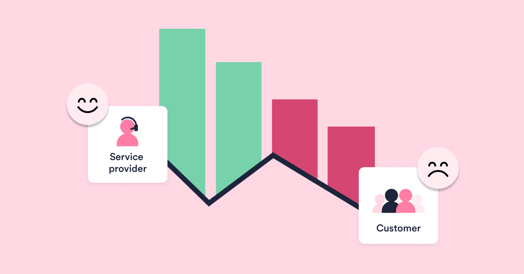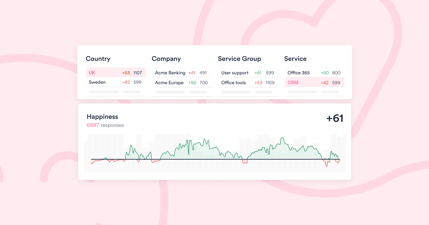When you - as the IT support provider - see green, but your customers see red, it's time to consider a change to your traditional service level agreements (SLAs) to better support employee experience (EX) and productivity.
1 - Customers must share their expectations and targets (and they should be ambitious)
Enterprises should share their expectations and goals more openly with their service provider, applying the concept in internal service provider scenarios too.
The key is that sharing the same vision is the starting point for success, and we're not talking about shorter response times. Instead, we're talking about more ambitious aims, such as becoming a more proactive service desk or improving the employee/customer experience (based on increased happiness and reduced lost productivity).
The same is true of outsourced scenarios; sharing expectations and targets should be seen as a platform to build a better partnership and greater trust.
Relationships matter; the more honest both parties are, the better the relationship. Think about it: if you don't communicate what you want (or need), how will the other party know? In IT, we can be many things, but we don't magically know what the customer is thinking - it takes openness and transparency from both sides to make things work.
2 - Current SLAs are harming the employee experience
When looking at which IT service desk SLAs are working to boost employee experience and which are doing the opposite, more often than not, you'll find that traditional SLAs (and targets) harm employee experience more than they help.
Traditional SLAs tend to focus on the following:
- Response time
- Call-handling time
- First-time resolution rate.
The trouble is that you miss out on the bigger picture if you only focus on things like response times and fix rates. It's all very well saying that the finance service was available 99.5% of the time, but what about that 30 minutes of downtime during month end? Or that morning when it wasn't accessible in the usual way and users had to use the app version rather than the desktop version they were used to? Or that couple of hours on a Friday afternoon when most users were saying that the performance was slow to the point of being unusable? What about when the customer's incident was fixed within the agreed SLA timeframes, but the support tech was grumpy to the point of rudeness?
The reality is that response times, fix rates, and technology performance are not enough when it comes to EX, and that's where experience level agreements (XLAs) come in.
3 - SLAs are the problem
If both enterprises and managed service providers (MSPs) think that SLAs harm employee experience, why do companies still use them?
Two reasons that commonly come up are:
- The procurement department insists that there's a sanction model in contractual agreements.
- The companies that provide the competitive bidding templates (RFPs) for service desk services propose/demand that specific SLAs are in place.
XLAs can improve EX by building the foundation created by SLAs, but be mindful of your audience. If procurement insists on a sanction model, ask instead for an agreement that considers the end-to-end experience instead of just one aspect. If the RFP form requests SLAs, could it be amended to accept XLAs as well?
How to introduce XLAs
Don't frighten the horses if your organization is genuinely wedded to SLAs. Start small. Let them know that you're not trying to get rid of SLAs; you're trying to improve them by adding best practices in the form of XLAs.
Things you could measure include:
- Consistent service quality among all service desk analysts
- Consistent service quality across all service desk platforms – it shouldn't matter if a colleague submits a ticket via phone, email or self-service; they expect a good experience
- IT team knowledge and approach; it's not enough to be able to fix the issue. Being able to see the issue from the employee's perspective is important too.
- Keeping the end user updated in a way that works for them.
- Clear, concise, and professional communication
- Proactivity of the service being provided
- Clarity about the services provided by the IT department
You can find more help around the introduction of XLAs in this practical guide.
Key takeaways
- Don't let the contractual agreements run your business
- Set an ambitious target for your service desk and share that with your provider.
- Build in XLAs into your service offering to bring EX front and center.
Plus, understand that more work needs to be undertaken to truly understand the impact of traditional SLA use by IT service desks and if and how industry thinking is changing.




